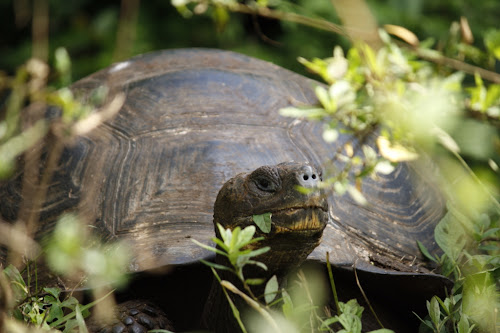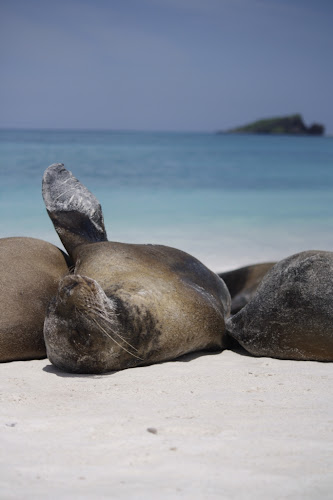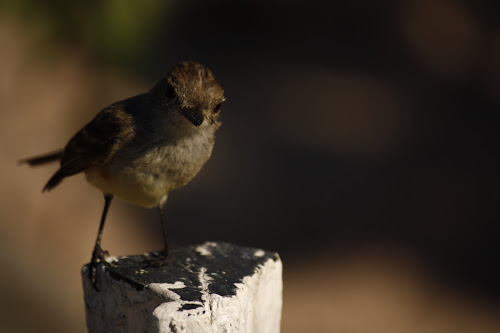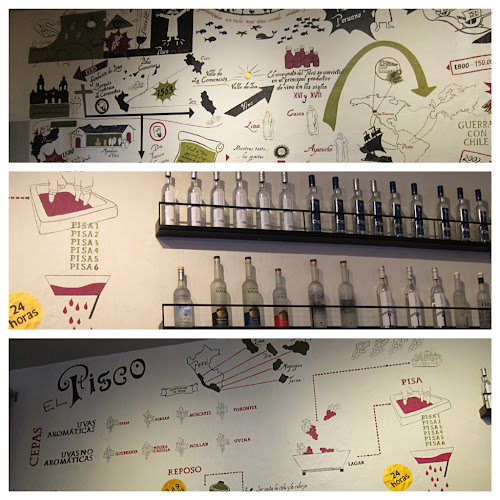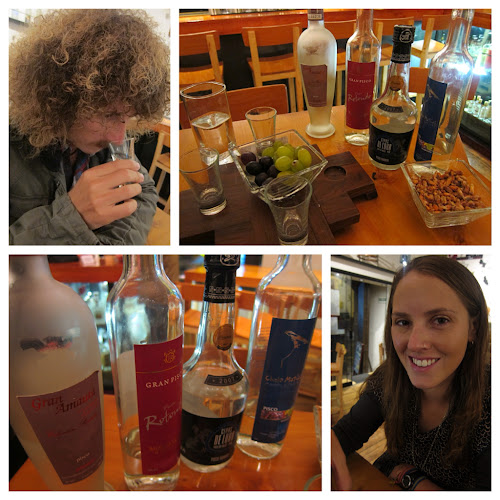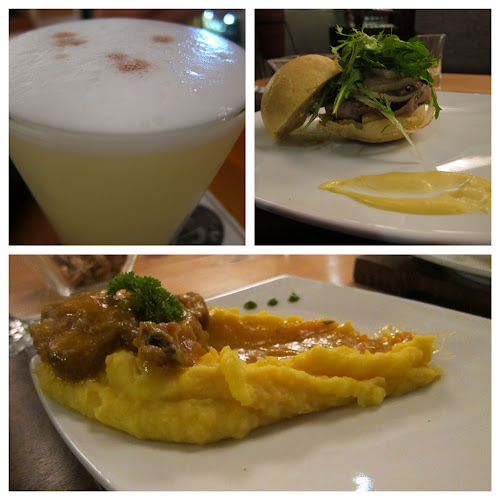Sunday 31 March 2013
Saturday 30 March 2013
WMDR
No this post is not about Weapons of Mass Destruction Returning, its about the Worlds Most Dangerous Road (sorry lame joke I know) and how we road down it on a mountain bike...
Still in action, but rarely used as a major throughfare, the road between La Cumbre and Coroico is a 64km, graveled track carved into the side of a mountain range. With periling cliff faces, boasting up to 600m drops, and no barricading to poke a stick at, this 3.5m wide road is an adventure seekers dream.
The road was originally constructed in the 1930's by Paraguayan POW's after the particularly brutal Chaco war. Since then it has been estimated that an average of 26 vehicles a year went over the cliffs, the worst occurring on 24th July 1983 killing more than 100 passengers. With no other viable way of getting to the north the government tried numerous safety tactics to help bring the death toll down, including changing the direction of traffic so drivers could see their wheels better when reversing up the cliff. However with the accidents still occurring it was decided that a new paved road was to be build in March 2007. Nowadays the road is primarily used by adventure seeking mountain bikers who hurtle themselves down the 3600m decent. And whilst there is slightly more room going down the narrow road on a bike, the road still claims its fair share of sacrifices. Since its opening into the tourism market in the 1990's there have been a total of 19 deaths along the road and countless amounts of accidents, one of which occurred 2 weeks prior to our ride but thankfully they survived the 200m fall with just a few broken ribs.
So after donning on our safety gear, giving another 96% proof sacrifice to the Pachamama and ourselves, we tested out our bikes and began the ride. The ride started at around 4700m above sea level, with a fairly steady down hill gradient bitumen road. This was a good chance to get use to the bikes, check out the scenery and become friends with the brakes. The scenery at the top was amazing, snow capped mountain ranges towering on one side with lush green valleys on the other. However this was only to be short lived as it wasn't long before we were feeling the bumps and skids of the gravel and staring face first down the 200m plus drop offs, with little to no pit stops.
Along the way down we stopped numerous times to take in the scenery, learn a little history about the road and check to make sure our underpants weren't soiled. Each section of the ride contained something a little different from the last, whether it was sweeping hair pin turns, cascading waterfalls to ride through, recently cleaned up landslides or memorial crosses that gave you the haunting reminder that this in fact was a deadly road. As we continued to drop in altitude the temperature rose quite rapidly, which was both a nice change and hindrance, particularly on the small uphill sections. Tired from the heat, but pleased for the increase in oxygen we reached the end of the road in one piece and still alive. With beer in hand we sat around a table, each regaling our tales of near misses and close calls before we were presented with our congratulatory "I survived the Death Road" t-shirts.
For any of you adventure seeking types out there who are thinking of giving the Death Road a try, Gravity Assist were the first company hurtle tourists down the road 20 years ago and are still doing a top notch job today. Their safety standards are well above par and all guides are native English speaking. Also did I mention you get a free t-shirt and bandana at the end...
Now if the pictures didn't scare you too much here is a video of our ride, enjoy...
- Ryan -
Friday 29 March 2013
Ceviche - a national Peruvian dish
After completing the inca trail I had singled out a restaurant I would like to try. In English it was known as Tony's dock and supposedly served the best ceviche in Cusco. Now ceviche is one of my favorite seafood dishes but in a country like Peru, particularly Andean Peru, sanitation is a big consideration when eating raw seafood. Given that this place was situated in the wealthy suburbs of Cusco we thought it should be safe and set out on the long walk (the day after completing the trail). The walk should have been 2 - 3 hrs return but since we got incredibly lost it was a little more like 5 hrs.
Well, the walk was worth it, packed with locals we took the waiters recommendations and ordered our entree, which turned out to be ceviche muscles - amazing quality and freshness (all seafood is flown in from Lima each day). We then took a stab at the Spanish menu (we had forgotten the phrase book) and ordered a combo of fried fish and yuca chips with a mixed seafood ceviche. While sitting there we noticed large platters for two going out to various tables and decided a return visit was required despite the walk. Two days later we made the walk, without getting lost this time, and ordered a platter (phrase book in hand) for less then $20 we had a massive platter of seafood paella, mixed ceviche, crab & potato cake, curried ceviche and fried fish. This restaurant has definitely been one of our favorites on the trip so far, worth the detour if you are ever in Cusco, just don't try and walk if you are tried from walking the inca trail.
- Louise -
Wednesday 27 March 2013
Sunday 17 March 2013
Pisco tasting
With Lou on her culinary quest of the best national and international dishes throughout our travels, I have been taking a slightly different approach and working my way through some of the local beverages, particularly of the alcoholic variety. So being in Peru I most certainly could not pass up the opportunity of taste testing the local delicacy, Pisco. And what better a place than the Museo del Pisco in Cusco. Upon entering this bar/restaurant/magical play land you automatically get a sense that you are back in Melbourne, except everyone speaks Spanish... Behind the bar there is an almost endless variety of the national spirit from all the major producing regions and covering the opposite walls is a graffiti style depiction of the history of Pisco and a flow chart of the distilling process.
Perusing the mouth watering cocktail menu for sometime, we both decided that a Pisco tasting was a must, and after some very poor bumbled Spanish we found out that our Macedonian waiter could speak English and we ordered a tasting plate. So under his more than capable guidance we allowed him to select four Pisco's for us to taste. But before getting to savor this new spirit, which will definitely be gracing our own bar upon returning to Australia, our waiter gave us a very detailed explanation into the world of Pisco. For those who don't know Pisco is a clear spirit fermented and distilled from grapes. Similar to its other alcoholic cousin wine, it has very strict rules in terms of grape variety, origin, aging, processing and alcoholic content (only between 38-48%). The true Peruvian Pisco, Chile make a similar type of Pisco although do not abide by the regulations, can only be made from 8 grape varieties grown in 5 Peruvian regions, Lima, Ica, Arequipa, Moquegua and Tacna. After harvesting, like wine, the grapes are put into large tubs ready for stomping. Depending on the type of grapes and if varieties are mixed the final product will be different. After 6 lots of grape stomping the juice is then put into a maceration tub known as a 'puntaya' and left to settle for 24 hrs. Then it is transferred to the fermentation tubs, nowadays typically made from concrete or stainless steel, to turn it into alcohol. This typically takes between 7-14 days and is purely a natural process between the sugars and yeast in the grapes which is only observed by the Pisco producer to ensure the process does not stop or pass certain limits. Once the fermentation process is finished the juice is transferred to copper vat stills in preparation for the distillation. Using very controlled heating, to ensure the aromatic components of the Pisco are maintained, the volatile elements of the grape juice are vaporized away from the near final product. Finally the distilled product is stored in vessels or 'botijas', which do not alter the physical, chemical or organic composition of the liquid, for 3 to 9 months. After this the final product is ready for tasting . . .
Like I mentioned before our waiter selected 4 Pisco's for us to try, 2 Pisco puro's (only made from a single grape variety), an acholado (a blend) and a mosto verde (when then grape juice has not been allowed to fully ferment). Within the 2 Pisco puro's we tried an aromatic grape variety (torontel) and a non aromatic (quebranta). First savoring the aroma of the Pisco we then each took a small sip, only letting it sit upon our tongues for a few seconds, before swallowing and exhaling out our mouth. After appreciating the first and discussing the aromas and taste we soon made short work of the last 3 following the same process as before. Amazingly, whilst all the alcohol contents were very similar 42-42.5%, there was astonishing differences between all four Pisco's, not just in alcohol sensation but aroma and taste.
After our very informative and delicious tasting we noticed our tummies were grumbling, so we headed down stairs to see if the food menu was as extensive as the Pisco. Whilst not being as big a food connoisseur as my wife, I must admit the menu certainly did not disappoint. Sharing meals, as we always do to experience all the flavors, we had a Rabbit in Gravy and an Alpaca Mini Burger, both of which were to die for. To wash all this down with we had a Chilli Infused Pisco Sour, which whilst it only had 50/50 split chili Pisco to plain Pisco it packed an awesome fiery punch.
So if you are ever in Cusco and wanting a history lesson that doesn't involve the Incas check out the Museo del Pisco.
- Ryan -
Friday 15 March 2013
The Hairy Andean Mountain Worm
Situated high in the Andean mountain ranges of Peru is the Hairy Andean Mountain Worm or as its know by its Latin name Chewpaca. Little is known about this majestic above ground land worm due to their near extinction by the Inca's, for their sweet meat, fur and medicinal purposes, and also their very timid nature in the wild. From the little study completed on these creatures researchers have been able to deduce the following:
- They live in the Andean mountains, Peru, typically above 4300m
- Life span of 80 years
- Average length of 4m, but have been know to grow as long as 6m
- Whilst they are a land crawler, their fur is some of the softest on the planet. For this reason the Inca's use to hunt them and use their skin/fur for sleeping bags
- Estimated only 56 are left in the wild
- Diet consists of mostly of snails and moss. But they are particularly fond of spiderwebs although not spiders
- They frighten very easily and when spooked can reach speeds of up to 17km/h
- Their mating habits are quite strange, which is also believed to be a reason for the small numbers, as they live solitary lives only to come together every 7 years to mate. After mating season it's not quite sure how they reproduce as this has never been observed
- Inca's were also know to hunt them for medicinal purposes, as their skin secretes an oil which was used to cure baldness
Fortunately for us we were able to snap the pictures below as one of them was crawling through a town in search of snails.
- Ryan -Saturday 9 March 2013
Choco Museo
As soon as I heard that there was a chocolate museum in Cusco I though we better go see what they had on offer. As soon as we were in the door (we had to wait at the front for them to open) I immediately signed us up to the chocolate making class - bean to bar. The class started with us moving up to the museum area and our instructor explaining how the Cocoa is grown and harvested, and how the fermentation process must be completed within 5 hrs of picking the beans. We then moved back to the kitchen and started to roast the beans in the traditional clay pot. After roasting the beans we set to peeling them before placing them in a mortar and pestle to grind the beans into a paste. Gladys our instructor made this a competition (there was two other Dutch girls in our workshop) which Ryan, with his manly strength won and was rewarded with chocolate tea, husks from the cocoa beans to be boiled with water really yummy.
Next Gladys made us a traditional Mayan drink using the cocoa bean paste and chilli which was quite tasty. She then made a traditional Peruvian hot chocolate with milk, spices and honey - also really yummy. Next up Gladys showed us the mixing stage which went for 24 hrs and then demonstrated the tempering phase which is to ensure the chocolate looks glossy and of high quality. Finally, we started on the best part - the making of the bars!! We were all given our molds for the chocolate and Gladys brought out a tray of flavoring to mix in with our chocolate. I made coconut and coffee, salt and chilli, mint, m & ms, Oreos, while Ryan made two blocks, one coffee and cinnamon and the other chilli, salt and coca leaf. We are still in the process of eating our take home bars but so far they have tasted great. If you are ever in cusco check out the Choco Museo, its a good way to spend a morning.
Thursday 7 March 2013
Salt flats, volcanoes and flamingos
Taking a slight detour from our original plan we decided to head south to Uyuni to experience one of the seven natural wonders of the world Salar de Uyuni (Slat flats of Uyuni). After a very uncomfortable 11hr bus ride we arrived in Uyuni and were quickly joined by our 4 other tour companions and Tunupa Tour driver Waldo. It wasn't long before the car was packed and we were on our way for our 3 day tour.
It really doesn't matter how many times you see photos of the Salt Flats, nothing can brace you for the shear magnitude and beauty of this 10,500 square kilometers of pure salt plain. Upon entering the flats we gazed out of the tinted windows and we were all in awe at the white horizon that extended out in all directions around us. But it wasn't until we first to a step onto the salt that you realize it's full magnitude. With its slight layer of crystal clear salty brine it was as if you were walking on top of a parallel universe.
It wasn't long after the initial awe moment subsided that we all decided to take part, in the almost as famous, funny salt flat perspective photos. Since the entire area is one big white canvas you can really get some amazing, logic defying photos. However for some (two Japanese guys on our tour) a more interesting photo is to get completely nude, except for your backpack, a give a slightly shocked model look. Unfortunately I don't have a copy of these photos due to legal reasons however here are some of ours.
After the salt flats we all piled back into the Lexus 4x4 and headed for our first nights rest point, Villa Alota. The accommodation was only basic, small mud brick house with dorms and twin rooms, showers with hot water were an optional extra, but at 10 Bolivanions each and our current salty state we couldnt pass it up. The next morning was a reasonable 8am start where we continued our journey south to visit 5 small lagoons all inhabited by flamingos, the Siloli Desert, Stone Tree and finally Luguna Colorada, our second rest stop. The scenery along the drive was amazing and forever changing, with crops of quinoa blowing in the breeze, herds of llama wandering aimlessly and snow capped mountains covering the horizon. Each lagoon had a different quality and with it a difference species of flamingo. The arid desert was a plesant change in scenery, from the high altitude forests in the north, and the random scatter of volcanic rocks made it great for photos.
During the first stop where there was flamingo's we were concerned because we didn't get to see them up close, as they were very timid. Well we really shouldn't have worried ourselves as almost every lake we stopped at was full of them. At the final lake, Luguna Colorada, Ryan thoroughly enjoyed the opportunity to photography them by stethly sneaking up to the bank, much to the amusement of the others on our tour group. However, it was completely worth it, as he got some amazing photos!
After a few drinks on the final night with our new friends from the tour, the third day started very early - a 4am wake up. This was to get to see some gueysers and get to the hot springs at sunrise. It was bitterly cold when we woke up and everyone was moving slowly but it was all made worthwhile when we were slipping into the smoking waters and sitting back to watch the sun rise. After a half hour soak and with the sun in the sky the quick dash to get dressed was a lot warmer then we anticipated. We then drove onto the green lake (which wasn't green due to wet season) and then dropped half the tour group off for their bus into Chile. Ryan and I made the most of the quick stop by jumping the trench illegally into Chile and then back again - our quickest international trip yet! With considerably more room in the car we started the drive back to Uyuni past Licancabur Volcano and many more that our driver listed as we drove past. We then stopped at Rocks Valley which was all formed from surrounding volcano's creating beautiful red rocks.
We have heard picking a tour company for the salt flats can be a bit of a nightmare, so we were admittedly concerned when we booked from La Paz (we wanted to make sure we could go on a specific day). We booked with Tunupa Tours, on their budget tour - $110 aud for 3 days / 2 nights. To anyone else looking for a tour we highly recommend them, and our driver Waldo. The accomodation was extremely basic, but comfortable nevertheless, the vehicle was in great condition and the food was great. We certianly weren't expecting chicken schnitzel with pasta and veggies in the middle of an isolated desert or llama steaks with quinola, roasted potatoes and bananas in a brick oven. They even gave us a bottle of wine to share on the final night!
After a long drive we arrived back in Uyuni to make our overnight bus back to La Paz.- Ryan & Louise -
Subscribe to:
Posts (Atom)











